Rasmussen's deceit in detail - part one
33 year-old Michael Rasmussen was just days away from the pinnacle of his career on July 25, 2007....
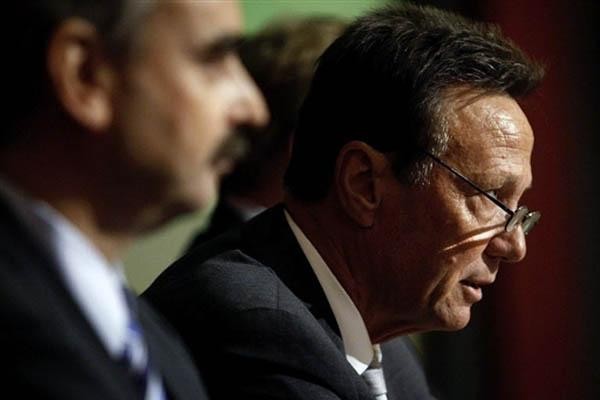
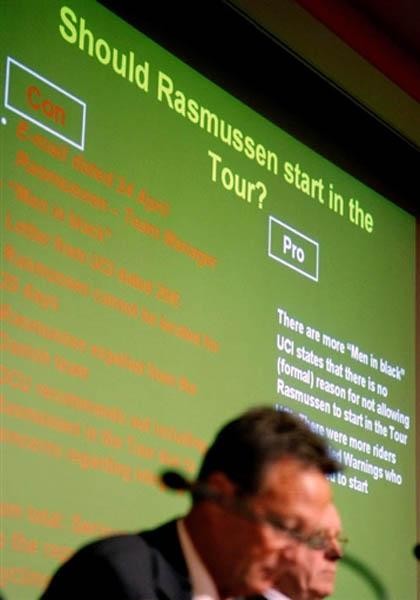
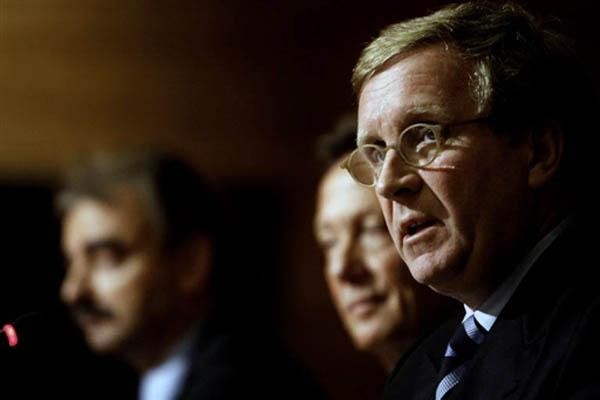
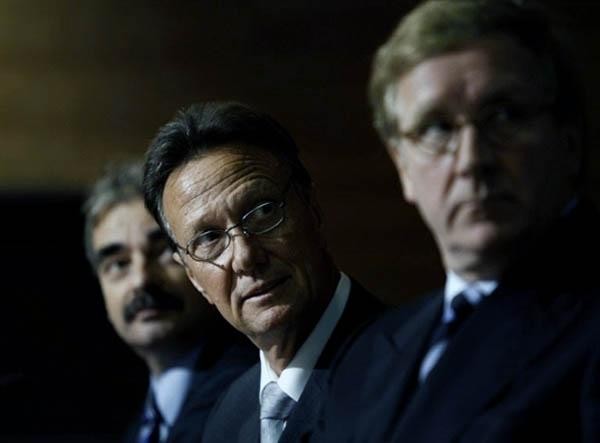
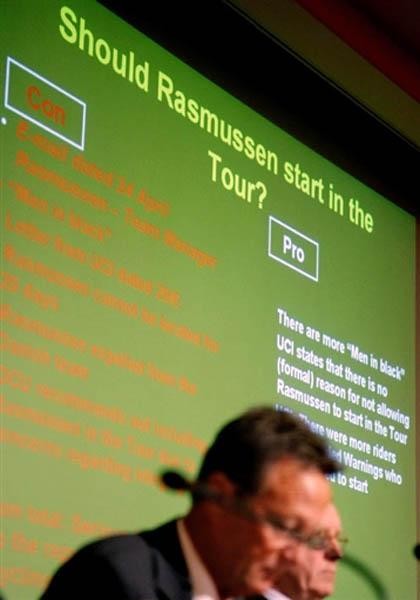
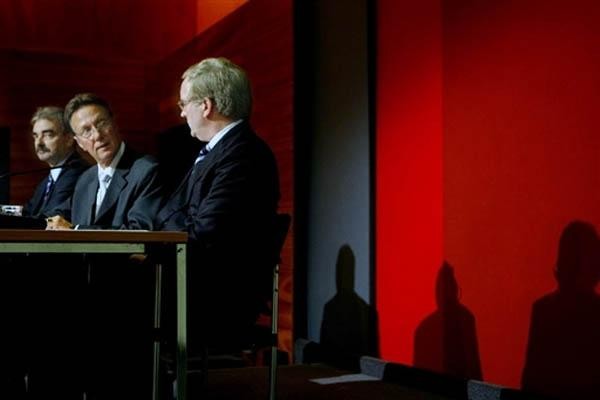






News feature, November 13, 2007
Michael Rasmussen deliberately misled the UCI regarding his whereabouts prior to the Tour de France, and should not have been allowed to start the Tour, an independent inquiry decided. The 48 page report compiled by an independent committee set up by Rabobank was released on Monday, Cyclingnews' Susan Westemeyer breaks down the facts.
33 year-old Michael Rasmussen was just days away from the pinnacle of his career on July 25, 2007. He had won stage 16 of the Tour – the final mountain stage – and was more than three minutes ahead of his nearest competitor, Alberto Contador (Discovery Channel), in the overall classification with just one remaining decisive stage. His lead was nearly insurmountable, and Rabobank was well on its way to the team's first Tour de France victory. Yet his team took the unprecedented step of firing the rider that very evening and secreting him out of France before the story broke.
What followed was a month long inquiry into Rasmussen's story – one that revealed a web of deceit, resulting in missed out of competition doping controls, the escalation of tensions between the Tour de France organisers and the UCI and the end of a respected director's career with the Rabobank team.
Rasmussen claimed that the team knew his whereabouts and had even provided him with travel arrangements for his trip to Italy and France in June and was disputing being sacked, so team sponsor Rabobank hired an independent committee headed by Peter Vogelzang, a former chief of the Utrecht Police and head of the 2004 Dutch Olympic team, to get the facts in the case. The 48-page report released Monday at a press conference at Utrecht, Holland, spreads the blame amongst Rasmussen and Team Rabobank, as well as the UCI.
The Vogelzang committee reported that Rasmussen "deliberately provided incorrect whereabouts information on multiple occasions and could therefore deliberately not be tested for a given period. When an athlete is deliberately out of reach for doping testing organisations during a specific period before the Tour de France, and does not provide a credible explanation, this creates a strong suspicion that he may be using substances from the forbidden doping list." The report clarified, "This does not, however, prove that the related athlete has actually used doping."
Where are you going, where have you been?
Get The Leadout Newsletter
The latest race content, interviews, features, reviews and expert buying guides, direct to your inbox!
The whereabouts reporting requirement was introduced by the UCI in 2005 in order to facilitate unannounced out of competition doping controls. Rasmussen had several run-ins with the UCI, the report detailed, but the UCI itself had difficulty keeping up with its own information.
Problems with the whereabouts system began at its inception, according to the report, and when it was first introduced, the UCI and the riders didn't treat it seriously. "The UCI itself, particularly in the beginning, gave the impression that it did not take the whereabouts information particularly seriously," the report read. "Both the management of Rabobank team and the riders were under the impression that the UCI considered the obligation imposed by the WADA to be an administrative burden. In addition, the committee has observed that riders, partly as a result of the relayed attitude taken by the UCI, were insufficiently unaware of the necessity to provide very specific whereabouts information."
The committee supported the UCI's right to gather whereabouts information on riders and to perform unannounced doping controls. "The athlete does not have a choice as to whether or not he wishes to be subject the system," the report read. Certain riders are required to provide the UCI with this information at all times by quarterly reports which can and should be amended as needed. The riders can make changes via fax, e-mail or regular mail, but they must be received by the UCI before the period it covers.
There are several rules that apply to Rasmussen's case. Notably, the riders can receive a written warning if whereabouts information is not received in time or is incomplete. If the information is not corrected within seven days or the rider cannot justify the failure to provide the information, the written warning is converted to a recorded warning. In addition, if the rider cannot be located for an out-of-competition control and cannot justify his absence, a recorded warning is issued.
Crucial to the case of Rasmussen is article 220 of the UCI regulations, which states that a rider will not be allowed to participate in a major tour if he has missed a test or received a recorded warning within 45 days of the start of the tour. The report concluded that Rasmussen's offenses met this regulation, and that he should have not been on the start list for the 2007 Tour de France.
Rasmussen's history of mystery
Rasmussen's troubles with the whereabouts system started quietly in March of 2006 when he received a recorded warning from the UCI for not submitting his whereabouts for the second quarter of the year. The committee found that this recorded warning was not warranted because the Danish rider promptly supplied the information.
The next incident was 13 months later, when the Danish anti-doping authority, Anti-Doping Denmark (ADD), found he was not at home in Italy when it arrived to test him on April 6, 2007. Rasmussen said that he had traveled to Munich to fly to the Tour of the Basque a day early. The ADD issued him a recorded warning, which the Committee found to be justified.
On April 24, a member of the Rabobank team board of directors sent Rasmussen an e-mail concerning airline tickets for a training period in the Pyrenees from June 25 to 29. He responded a day later, "I prefer if we can keep the trip quite [sic], as I am supposed to be in Mexico at the time." The director forwarded this e-mail to the chairman of the board of directors, Theo De Rooy, who responded, "I want to let you know that as employer I urge you to provide the controlling bodies with the correct whereabouts information! If you want to go training in Mexico, just go ahead, it is out of the question that your employer is going to cooperate in some cover up operation. The responsibility in this matter is completely yours!"
In response, Rasmussen called De Rooy to say that he wished to keep secret from the press the fact that he was training with team-mate Denis Menchov in the Pyrenees.
Two things happened on June 21. First of all, Anne Gripper, the head of the UCI's anti-doping programme, announced that the UCI was investigating a group of riders dubbed the "men in black" – riders who frequently train in something other than their team kit and in unusual places, but who had also come to the organization's attention for possible doping violations. The UCI refused to name specific riders, but Rasmussen was a suspected target.
Also on that date, the Danish cycling federation (DCU) tried to test Rasmussen in Italy but was unable to find him. Rasmussen claimed that he was in Mexico and that his whereabouts notification was still underway. The DCU decided to expel Rasmussen from the national team, informing him on June 30. He informed Rabobank team management of this on July 2, the same date that the DCU informed the ProTour team and recommended that it not take Rasmussen to the upcoming Tour de France.
The news of Rasmussen's troubles weren't made public until well into July – after the Rabobank rider had taken the yellow jersey.
Pin the tail on the chicken
The committee's report detailed a confusing game of changing whereabouts notifications from Rasmussen during the period prior to the Tour de France. The first notification came via a letter from Rasmussen which was postmarked from Italy on June 8. It informed the UCI that he would be in Mexico from June 4 - 12, and was received by the UCI on June 11.
Rasmussen was nowhere near Mexico when he met with team management members in Bergamo, Italy on June 6, the committee noted, indicating he had purposely misstated his whereabouts to the UCI.
The UCI received another letter from Rasmussen, this time arriving on June 28th and indicated he would be staying in Mexico from June 12 - 29. This time the UCI issued an official recorded warning to Rasmussen for submitting his changed whereabouts information too late. "Rasmussen cannot hide behind the fact that the letter was en route for a long period to justify the late arrival of the whereabouts," the committee said. "He is obligated to submit any changes to his whereabouts immediately so that he can be tested out of competition."
Rasmussen might have gotten off with just a warning had he actually been in Mexico at the time, however, while training in the Dolomites in June 13, Rasmussen happened to meet up with former professional cyclist and current television commentator Davide Cassani. When questions about Rasmussen's whereabouts surfaced during the Tour, Cassani detonated the scandal by revealing that he had seen the Dane in Italy.
On June 27, the UCI received a fax from Rasmussen saying that he would be training in the Pyrenees from June 27 to 29. Unbeknownst to the UCI, Rasmussen's airline tickets showed him arriving in France on June 25th, the report revealed. "In view of the fact that Rasmussen actually stayed in the Pyrenees from 25 June through 29 June 2007, this once again involved submitting a change too late. Rasmussen also told the Committee that he trained in the Alps from 21 June to 24 June 2007. He failed to communicate this change to the UCI."
The committee's report tallied up three incidences where Rasmussen failed to correctly and timely submit his whereabouts in the month of June alone, and one in which he failed to report them at all. The report was critical of the UCI's response to the incidents. "While this should render a total of four warnings, the UCI chose to nonetheless combine these incidences into one single recorded warning.
"The UCI consequently suffices with one recorded warning for all the violations in the period 4 June through 29 June 2007, while it is the committee's opinion that each incident constitutes an independent offence. The fact that Rasmussen now states that he was not in Mexico at all places these considerations in a different light."
Who knew?
Rasmussen finally confessed to having lied about his whereabouts in a press conference last week, preempting the report's findings. While Rasmussen admitted that he lied, he also insisted it was done "for personal and marital reasons alone and in consideration of my family". The committee's report did not find the Dane's reasoning to be valid. "He claims that these private reasons arose in May 2007," and that "the reasons are only known to the Committee members and will not be made public. The committee is of the opinion that the stated private reasons constitute an unsound means for achieving Rasmussen's intended aim."
While Rasmussen asserts that the team knew exactly where he was the entire time, team director Theo De Rooy said that he assumed that Rasmussen would remain in Mexico for most of the month of June. While Rasmussen claimed that other members of the Board of Directors knew that he would not be in Mexico, those Board members deny any such knowledge. "This means that conflicting word-against-word statements are involved. The committee has been unable to determine which party is telling the truth."
Regardless of who knew what, the deceit caused a dangerous situation when Rasmussen unexpectedly rode himself into the leader's yellow jersey in the Alpine stages of the Tour. At the very moment when Rasmussen had the world's attention, the Danish federation chose to bring up the missed tests. When the stakes were at their ultimate high, with Rasmussen ready to coast into a dream world of Tour de France champion, a journalist told De Rooy that Cassani had met Rasmussen in Italy in June. De Rooy confirmed this statement with Cassani and then confronted Rasmussen. "Rasmussen initially confirms Cassani's story, but later retracts his confirmation," the report stated.
De Rooy, as Chairman of the Board of Directors of Rabo Cycling Teams, decided that Rasmussen's lies were serious enough to warrant action. Rasmussen was withdrawn from the Tour that same day and subsequently fired.
Part two covers the roles of the UCI and the team.